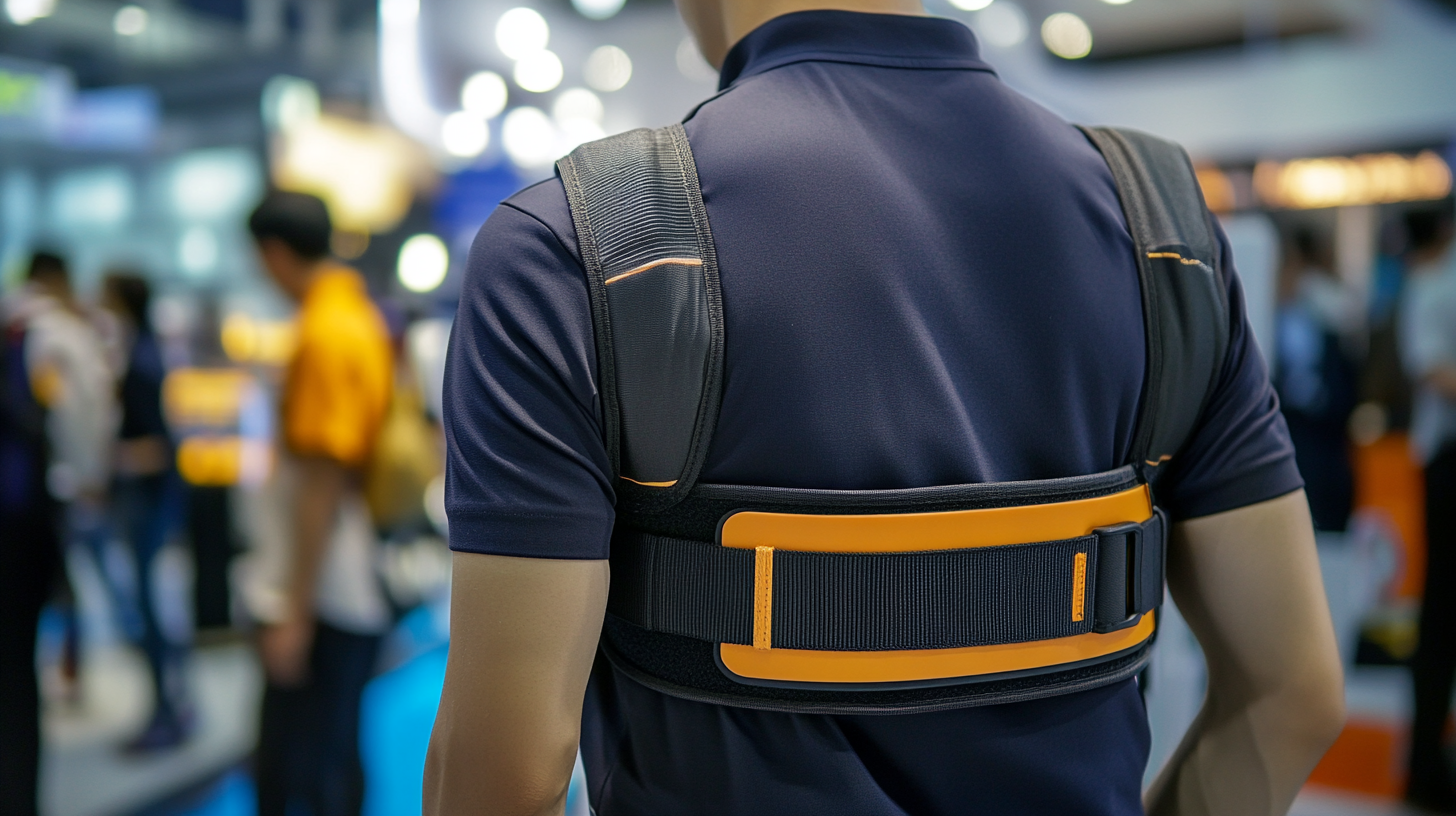The 137th Canton Fair, held in Guangzhou, has highlighted significant trends within the global market, particularly the surging demand for Neoprene Waist Belts. With a record attendance of 288,938 international buyers from 219 countries, representing a 17.3% increase compared to the previous session, it is evident that consumer interest in innovative fitness and health products is rising. According to industry reports, the global neoprene market is projected to reach $3.67 billion by 2026, driven by an increasing focus on health and wellness among consumers. The versatility and durability of Neoprene Waist Belts make them popular for fitness enthusiasts looking to enhance their workouts. As the fair concluded with an impressive onsite export intention amounting to $25.44 billion, the ongoing demand for such products signals a robust growth trajectory within this niche sector. With the next Canton Fair set for October, companies are encouraged to seize opportunities in this thriving market.

The 137th Canton Fair has highlighted a significant trend in the fitness and wellness industry: the rising popularity of neoprene waist belts. These versatile accessories are being embraced not only for their practicality but also for their role in enhancing workout efficiency. According to a recent market analysis, the neoprene waist belt segment is projected to grow at a CAGR of 8.5% from 2023 to 2030, driven by increasing health consciousness and fitness trends worldwide.
At the Canton Fair, many exhibitors showcased innovative designs and features that appeal to a broad audience. The demand for neoprene waist belts surged as consumers seek products that provide support during workouts while also promoting sweat enhancement. Additionally, the versatility of these belts for various fitness activities—from yoga to weight training—has been a key factor in their growing appeal. Data from fitness gear reports indicate that 60% of consumers prioritize comfort and functionality, further cementing the neoprene waist belt as a staple in modern athletic wardrobes. With this increasing interest, industry players are expected to focus on developing sustainable and tech-enhanced products that meet these consumer demands.
| Category | Trends | Market Size (USD) | Growth Rate (%) | Top Regions |
|---|---|---|---|---|
| Fitness | Increased Focus on Health | 250 million | 15% | North America, Europe |
| Fashion | Sporty Styles Trending | 150 million | 10% | Asia-Pacific, Europe |
| Healthcare | Post-Recovery Support | 100 million | 12% | North America, Asia-Pacific |
| Rehabilitation | Therapeutic Benefits | 80 million | 8% | Europe, North America |
The increasing demand for neoprene waist belts has been a noteworthy trend at the recently concluded 137th Canton Fair. Several key factors are propelling this growth in global markets. Firstly, the rise in fitness consciousness among consumers worldwide has led to a surge in demand for products that support active lifestyles. Neoprene waist belts, recognized for their flexibility and durability, are becoming essential for those aiming to enhance their workouts and achieve fitness goals. Their ability to provide compression and support during exercise makes them particularly appealing to health enthusiasts.
Moreover, the versatility of neoprene waist belts is attracting a broader audience beyond just fitness aficionados. These belts are increasingly being marketed for everyday use, offering style and comfort for various activities. As fashion trends shift towards athleisure, many consumers are looking for functional yet trendy accessories that can seamlessly fit into their daily routines. This adaptation of neoprene waist belts for casual wear highlights the evolving consumer mindset, paving the way for sustained demand in diverse markets. The Canton Fair's showcase of innovative designs and functionalities further ignites interest, indicating a promising future for this category in the global marketplace.

The 137th Canton Fair has unveiled a remarkable surge in interest from international buyers for neoprene products, particularly neoprene waist belts. This trend mirrors the broader shift in the surfing and water sports industries, where the demand for high-quality neoprene gear is growing at an unprecedented rate. According to a recent market analysis, the global neoprene market is projected to reach approximately $5.8 billion by 2025, driven by innovative applications in sportswear and protective gear.
Additionally, advancements in neoprene manufacturing, such as eco-friendly alternatives derived from recycled materials, are shifting consumer preferences towards sustainable options. Buyers at the Canton Fair remarked on the increasing popularity of neoprene waist belts, often emphasizing their versatility and performance in both fitness and leisure activities. This aligns with a growing trend in the fashion industry where functional yet stylish accessories are becoming essential. The reinforced demand highlights a significant shift as consumers prioritize both functionality and sustainability in their purchasing decisions, setting the stage for the neoprene market's expansion in the coming years.

The recent 137th Canton Fair has shed light on the increasing appetite for neoprene waist belts, indicating a significant shift in consumer preferences towards fitness and health-oriented products. The fair showcased over 150 exhibitors specializing in neoprene-based accessories, a 20% increase from the previous year. According to the Global Neoprene Market report, the industry is projected to grow at a CAGR of 4.5% from 2023 to 2030, reflecting a broader trend toward health-conscious lifestyles.
Insights gained from the fair suggest that neoprene waist belts are not just trending but are expected to become an essential item for fitness enthusiasts and those seeking support for weight management. Specialty retailers noted a surge in inquiries, with over 60% of brands highlighting the importance of neoprene belts in their 2024 product lines. The higher elasticity and thermal insulation properties of neoprene make these belts ideal for workout regimes, driving their popularity in fitness circles. As the demand continues to rise, manufacturers are advised to focus on innovative designs and sustainable materials to capitalize on this expanding market.
The chart below illustrates the increasing demand for neoprene waist belts based on observations from the 137th Canton Fair. The data reflects interest from various sectors including fitness, fashion, and healthcare, indicating future opportunities for growth in this market.
The 137th Canton Fair has once again highlighted its pivotal role in driving innovation and sales within the neoprene product market, particularly with the rising popularity of neoprene waist belts. According to industry reports, the global neoprene market is projected to reach USD 4.5 billion by 2025, growing at a CAGR of 6.5%. This surge is largely attributed to increasing health awareness and the demand for fitness-related accessories. The Canton Fair serves as a vital platform for manufacturers to showcase their innovations, enabling them to connect directly with global buyers and anticipate market trends.
Visitors at this year’s fair noted a notable increase in the variety of neoprene waist belts, including features such as adjustable designs, moisture-wicking materials, and ergonomic support for fitness enthusiasts. These innovations cater to the growing consumer desire for multifunctional and comfortable workout gear. As a result, many suppliers have reported substantial pre-orders and strengthened their supply chain partnerships during the fair, signifying a robust market demand.
**Tip:** If you're a retailer looking to capitalize on this trend, consider diversifying your product line to include various styles of neoprene waist belts that appeal to different fitness levels and preferences. **Tip:** Invest in quality materials and unique designs to differentiate your products in a competitive market. Additionally, engaging with suppliers at events like the Canton Fair can provide valuable insights into consumer trends and preferences.
